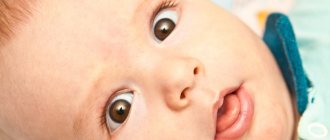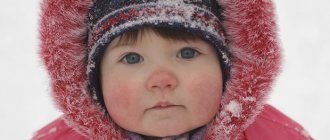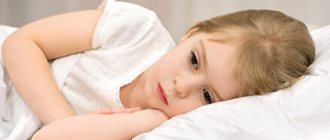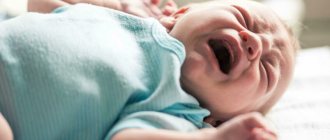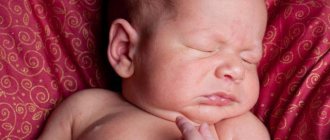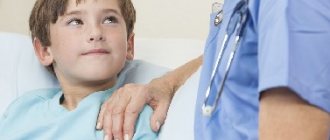What is wheezing?
This term usually refers to extraneous noises heard during breathing. They can be more difficult to identify in children than in adults. Firstly, the sounds made by the respiratory organs at different ages are different (which is considered normal). For example, children from one to seven often experience symptoms characteristic of ARVI in adults. It's about hard breathing. They go away on their own with age. Secondly, wheezing in a child without fever can be difficult to listen to, since the baby feels well and does not want to sit quietly for a whole minute and breathe at the command of parents or doctors.
Dangerous symptoms
If a child wheezes when he sleeps, then this condition is already an alarming sign.
Sometimes wheezing is accompanied by the following symptoms, which are undoubtedly dangerous for the body:
- Brief pauses in breathing. It happens that wheezing is accompanied by shortness of breath. This is an extremely dangerous symptom, especially in infancy.
- Blue discoloration of the skin. This is a reason to immediately call an ambulance. Blueness of the face and limbs indicates an acute lack of oxygen.
- Loss of consciousness. This condition also requires immediate medical attention.
- Discharge of large quantities of sputum. If you hear something squelching or gurgling when your child breathes, you should seek medical help.
- Temperature increase. Wheezing at fever is very dangerous. It is not difficult to guess that we are talking about a disease.
Listed above are the most dangerous and common symptoms that can occur with wheezing. But there are also less dangerous signs that are also common: vomiting, rash, weakness, headaches.
How to hear wheezing?
Medical workers do this using a special device - a phonendoscope. It allows you to locally amplify sounds. Often, pulmonary or bronchial wheezing can be clearly heard if you simply lean your ear against your back or chest. There are also diseases in which gurgling in the chest cannot be ignored even at some distance from the patient.
If the source of the sound is the throat or nasopharynx, the noise is usually accompanied by pain, voice distortion and difficulty breathing.
Possible complications
For wheezing of any type, it is very important to get qualified medical help. If you do not do this on time, the consequences can be very sad:
- Bronchospasm. This is a narrowing of the lumen of the larynx, in which respiratory function is acutely impaired. The condition is fatal and requires immediate medical attention.
- Complete cessation of breathing.
- Attachment of infection. If sputum stagnates in the lungs and is not evacuated, then pathogenic microorganisms develop in it. If nothing is done, pneumonia will occur, which is extremely dangerous, especially for young children.
- Progression of a dangerous condition. If wheezing is a symptom of a dangerous disease, it’s easy to imagine what the lack of medical attention can lead to! The disease will progress and the baby will die.
To avoid irreparable consequences, it is necessary to pay close attention to the child’s health. It is important to understand that wheezing is a symptom and not an independent disease. This means that there are pathological processes in the child’s body that interfere with normal breathing during sleep.
Wheezing in a baby
In early childhood (especially up to one year), it can be very difficult to diagnose and treat diseases. The baby cannot say what exactly is bothering him. At the same time, wheezing in an infant can be the result of either prolonged crying or a complex (and sometimes even dangerous) disease.
It is not always easy for a mother to understand whether her baby is choking or has simply been crying for too long. Doctors advise paying attention to other symptoms. If the baby, once in your arms, immediately calms down, looks healthy and behaves normally (despite wheezing), there is no need to worry. In the case when a bluish tint appears on the skin, and breathing is clearly difficult, you need to sound the alarm. This may be a symptom of a cold or infection, or a more serious illness. Such signs also sometimes indicate that foreign objects have entered the respiratory system. It is important that in all these cases emergency assistance from a specialist is required.
Types of wheezing in children
According to the location of wheezing, there are:
- extrapulmonary,
- tracheal,
- bronchial,
- pulmonary.
Depending on the mechanism of occurrence, there are:
- dry,
- wet.
Dry wheezing
They arise due to air turbulence in the presence of a thick lump of sputum in the respiratory tract, vibrations of the bridge formed by viscous mucus, or vibration of the vessel wall.
In large and medium-sized bronchi, the sound of wheezing, buzzing or buzzing, in small-caliber bronchi, is thin, whistling.
Extraneous noise of this type accompanies exhalation, since when inhaling, the lumen of the bronchial vessels expands and the sound is not heard.
Physiological dry wheezing occurs when a foreign object enters the respiratory system or due to excessively dry air in the room; they are not considered a pathology.
Wet wheezing
Air passes into the respiratory tract filled with sputum or other liquid (exudate or transudate, blood), and foams it. The resulting bubbles burst and a gurgling sound is heard. Wheezing is clearly visible on inspiration.
Wet noises can be fine-bubble (a symptom of a pathological process in the small bronchi or alveoli of the lungs), medium-bubble (inflammation in the middle bronchi), large-bubble (audible in large bronchi and pathological cavities of the lungs). The wet sound after coughing usually becomes less intense or disappears completely.
Crepitation is the sound of a crackling sound at the end of inhalation or the beginning of exhalation. The alveoli produce a surfactant that coats their walls and prevents them from sticking together. When the lung tissue becomes inflamed, the production of the substance is disrupted; as you exhale, the alveoli “stick together,” and when you inhale, they come apart with a bang.
Extraneous noises during breathing are often symptoms of acute bronchitis, bronchopneumonia, pulmonary edema, congestion in the pulmonary circulation, pneumonia, and bronchial asthma.
When to start worrying
Wheezing when breathing in a child is not in itself a reason to panic. But in combination with some other symptoms, they require immediate medical attention. An ambulance should be called if severe wheezing in a child is accompanied by a high temperature (38 or more), repeated vomiting, noticeable difficulty breathing (there is a risk of asphyxia) or under the age of one year (if it does not go away within 5 minutes to exclude “false alarm” caused by prolonged screaming).
In all other cases, there is no need for urgent specialist intervention. If a child has a cough with wheezing, a fever (within acceptable limits) and other signs of a respiratory infection, it is enough to call a local doctor.
Self-medication is acceptable when all the symptoms have already been observed before, a specialist has made a diagnosis and prescribed treatment. You will still have to schedule a visit to the clinic if the cough does not go away within a week, despite all the measures taken. A doctor should be invited to your home, even if the baby’s temperature is not very high, but it has not been normalized within 7 days.
Causes
Why does a newborn, infant, or toddler wheeze while sleeping?
If your baby wheezes during sleep, there can be a variety of reasons. However, they are not always associated with illness. Of course, if children are wheezing and coughing, most likely it is an infection, and bronchitis and pneumonia are extremely dangerous for children.
Let's consider the reasons that do not pose a threat to the baby's health:
- Overload of the vocal cords. This can occur after prolonged screaming or crying. The baby's voice becomes hoarse and light wheezing appears.
- Dry crusts in the nose. If a child wheezes when sleeping in a room with dry air, then the baby may have crusts in the nose that interfere with breathing.
- Postnasal drip syndrome. The mucus that forms in the nose flows down the back wall of the nasopharynx and leads to gurgling wheezing. Most often, this condition appears when the baby sleeps on his back.
- Teething. The fact is that when teething, a lot of saliva is produced. When it enters the larynx, it causes wheezing sounds. This occurs during sleep.
- Stagnation of mucus. Sometimes mucus stagnates in the nasal passages. This may be the reason why a newborn wheezes while sleeping. This condition in itself is not a disease, but it causes a lot of trouble (including wheezing).
All of the above reasons are not diseases, so you can cope with such conditions on your own, without medical help.
Much more dangerous are the pathological causes of wheezing associated with diseases and dangerous conditions of the child:
- Runny nose. It may be the reason why a newborn or infant wheezes during sleep. Mucus clogs the nasal passages and makes it difficult to breathe.
- Adenoids. These are polypous growths of the nasopharyngeal mucosa. Adenoids interfere with breathing and are a breeding ground for pathogens.
- Foreign body in the respiratory tract. If the object is of a significant size, then the picture will be sharp, and this condition is difficult to miss. But if the size of the foreign object is relatively small, the only sign of its presence may be wheezing in the child during sleep.
- Viral infection. With respiratory infections, the larynx swells and becomes extremely sensitive. The vocal cords are often affected. All this leads to wheezing.
- Bacterial infection. If a bacterial infection develops in a child's lungs or oropharynx, it is accompanied by the formation of large amounts of mucus and pus. With this pathology, the child wheezes and coughs in his sleep. This is very unpleasant. If nothing is done, the sputum can completely clog the bronchi, and then the child will not be able to breathe.
- Obstructive apnea. This is a condition where the walls of the oropharynx are weak and close when you inhale. When the baby exhales, snoring is heard. Apnea is especially dangerous in young children. This syndrome can go away on its own, but sometimes specialist help is required.
In all of the above situations, consultation with a doctor is necessary. Only he can assess the degree of danger of the condition and prescribe appropriate treatment.
How to treat wheezing in a child?
The most correct answer to this question is what the specialist prescribes. However, knowing modern mothers (as well as grandmothers), it is worth assuming that no one will really listen to him, and their own knowledge will be used.
If wheezing when breathing in a child occurs as a result of a common viral infection, then they can be treated with medications (expectorants and anti-inflammatory drugs), folk methods (honey with milk, herbs, rubbing) and other methods (warming, inhalation). In some cases, it is necessary to use more serious drugs - antivirals and antibiotics. They should be prescribed by a doctor in accordance with the diagnosis and condition of the child.
Drug treatment
If a child has a cough with wheezing, and even a dry one, folk remedies will most likely not be enough. After showing the baby to a specialist and making sure that this is the result of a common cold, you can start taking an expectorant mixture or syrup. The last option is good because most of these drugs have a pleasant sweet taste, so the child will drink the medicine without harm. Although potions can be more effective (especially those that are sold in powder form and require dilution with boiled water). But children sometimes refuse tasty medicines, so they certainly won’t drink unpleasant ones, much less bitter ones.
For older children, expectorant medications in tablets or powders are quite suitable. Or a medicine for adults (it is important not to make a mistake with the dosage). If the doctor has prescribed additional anti-inflammatory drugs, you should not refuse them either.
ethnoscience
If, as a result of a complication of a viral infection or hypothermia, wheezing occurs in a child, treatment may not be medicinal (provided the temperature is normal). We are talking primarily about decoctions of medicinal herbs. When coughing, coltsfoot, thyme, licorice, and elecampane help well. You can relieve inflammation with regular chamomile. There are also special herbal preparations that are sold in any pharmacy.
In addition, inhalations of pine buds or potato peelings help against coughing and wheezing. But they are contraindicated at elevated body temperatures. Pine buds brewed in milk (a tablespoon per liter of liquid) are consumed orally, 50 ml every 2 hours. An untreated dry cough can go away in just a day.
Dry air
Wheezing in a child when breathing in the nasopharynx in combination with a cough may appear in dry air in the room. Such phenomena are observed in winter, when parents turn on the heaters so that the newborn does not freeze or catch a cold. Such care does not bring any benefit, but only harms the baby.
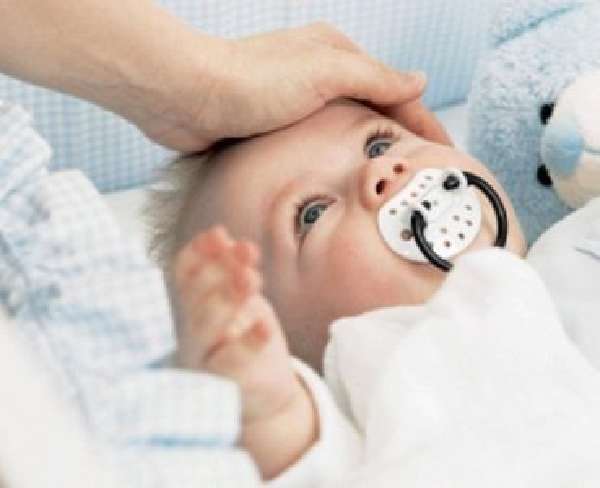
It becomes difficult to breathe with the respiratory organs that are not yet fully formed in this environment. The baby's nose accumulates mucus, which dries out and forms crusts. They do not come out naturally, occupying the narrow, thin passages of the nose, which causes wheezing in the baby. In this case, due to difficulty breathing, a dry cough appears.
Naturally, this reason does not require treatment. The main task of parents is to create comfortable conditions in the room for their baby to sleep and play:
- You should humidify the dry air flow by placing a container of water near the heater;
- It is recommended to humidify dry air using a wet towel placed next to the heating device;
- Be sure to ventilate the room, even if it is not very hot.
During sleep, you can open the window slightly and wrap the baby in a warm blanket. The flow of fresh air promotes sound and long-lasting sleep for the baby.
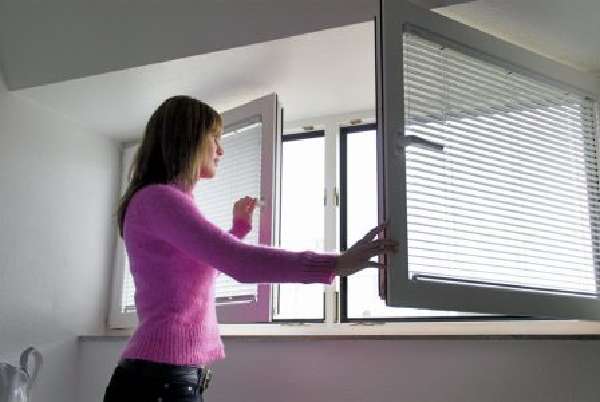
Compresses
When a child has wheezing in the chest and breathing is difficult, ways to ease it can be not only medicinal. Compresses are used mainly at night, provided that the body temperature is close to normal. This method of treatment is good for both infants and older children.
The simplest and most pleasant compress is potato. To do this, the vegetable is peeled and boiled. Then they are pounded (without adding any salt or fat) and placed in a plastic bag, which is tightly tied. Then you need to wrap it in several layers of fabric (a towel will do) so that it is warm, but not hot. The bundle is placed on the baby's chest and held for about an hour. From time to time you need to remove 1 layer of cloth, adjusting the temperature as the potatoes cool.
Children are sometimes given mustard-honey cake, which also has a good warming effect. Take vegetable oil and vodka in equal parts. Add the same amount of honey and mustard powder, as well as flour, to make a dense but soft dough. A flat cake is formed from it and placed on the chest or back (you can make 2). Having secured it with a bandage, you can leave it until the morning. If you are allergic to honey, this remedy is contraindicated.
Inhalers
They come in steam and aerosol. The former allow you to treat inflammatory processes in the upper respiratory tract using hot herbal decoctions or special solutions. They are used both for mild forms (laryngitis, ARVI, tracheitis) and for more severe diseases, for example, bronchitis. Aerosols are prescribed by a pediatrician when diagnosing complex forms. This applies to bronchitis and bronchial asthma. Any type of inhaler can be purchased at a pharmacy. It is usually used in combination with other types of therapy. The essence of this device is to turn the drug into steam (by raising the temperature or under pressure) and deliver it directly to the respiratory tract.
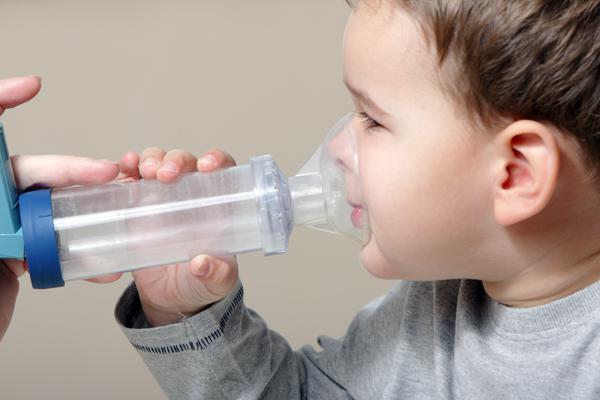
When to see a doctor
Wheezing during sleep alarms parents. This is an unusual condition and is therefore cause for concern. But is it worth running to the doctor or calling emergency help every time you wheeze? Of course not. It is important to learn to recognize pathological and dangerous conditions.
- If wheezing is accompanied by fever, a visit to the doctor is mandatory! If the values are low, you can go to an appointment at the clinic or call a pediatrician at home. But if the temperature is high, it is important to call an ambulance at any time of the day. Delay can be life-threatening.
- Wheezing, accompanied by lethargy, weakness and loss of strength, can be a sign of a dangerous illness. A visit to the doctor is mandatory! There may be no other symptoms, but at this time a disease may develop in the baby’s body.
- If you experience symptoms such as loss of consciousness or respiratory arrest, you should immediately call an ambulance. But while waiting for a specialist, it is important not to sit idly by, but to try to help the child restore his breathing.
- A foreign body in the respiratory tract is a direct referral to a medical facility. No matter what condition the child is in, a visit to the doctor cannot be postponed.
Physical exercise
If a child is breathing with wheezing, has a dry cough and does not clear sputum, therapeutic exercises are often used to alleviate the condition. Basic expectoration exercises are performed upside down. For example, you can take a child by the legs and lead him around the room in your arms. Then they perform the “birch tree”. If there is a horizontal bar in the apartment, you should hang upside down on it (but not for very long). Lightly tapping on the baby's chest and back can also be effective. As a rule, if he does not have a fever and his overall health is within normal limits, the baby will like this exercise.
When talking about a baby, they take him by the legs and shake him slightly upside down. Then tap on the chest and back. It will be useful to spread the child’s arms to the sides, then cross them over the chest. Massage of the chest and back (in the area of the shoulder blades) is no less effective. For babies it is done with their hands, stroking and tapping. Older children are given a vacuum massage using a can. The procedure is very unpleasant and even painful, but very effective. Helps even with bronchitis and pneumonia.
Treatment options
It must be said right away that treatment for children is prescribed by a doctor. Self-medication is unacceptable!
- If wheezing is caused by a runny nose, the pediatrician prescribes drops, sprays and rinses. Usually such remedies are effective and quickly cope with the disease. For allergic rhinitis, antihistamines are prescribed.
- Treatment of adenoids and nasal polyps can be conservative or surgical. Conservative tactics are chosen when there are a small number of adenoids. The operation is performed when there is pronounced proliferation of the nasopharyngeal mucosa.
- Treatment of bronchitis and pneumonia can be carried out both in outpatient and inpatient settings: it all depends on the severity of the disease and the age of the child.
- Foreign bodies from the respiratory tract can only be removed by a doctor. Doing it on your own can make the problem worse. The object may sink further into the lungs or become lodged in the nasal passages.
- In conditions that threaten the baby’s life, emergency therapy is carried out aimed at restoring basic vital functions (breathing, heartbeat).
- If wheezing is caused by reasons unrelated to illness, you can help your child cope with the problem at home.
Allergic cough
Often, wheezing in children, cough, runny nose and swelling of the nasopharynx are the result of contact with external irritants. Allergens can include plant pollen, animal hair, clothing, toys, food and medications. Often, with age, allergies go away on their own. Sometimes it stays for life. Allergies are difficult to treat, and since their manifestations are often accompanied by fever, swelling of the respiratory system and the risk of asphyxia, the first priority is to combat the symptoms.
If a child experiences a similar reaction to any irritants, then contact with them should be minimized (ideally, eliminated). The first aid kit should have the appropriate medications - we are talking about decongestant and antiallergic tablets, nasal drops, etc. It is better to use them on the advice of a specialist, since self-medication in this case is the most dangerous.
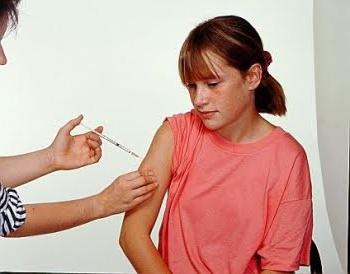
Prevention
Of course, all parents dream about the health of their children. But very few take concrete actions aimed at maintaining it. We are talking primarily about proper nutrition, regular physical activity, active recreation, walks in nature and hardening. Children do not need to be bundled up and given antibiotics at the first symptoms of a cold. After all, immunity is developed precisely at this age. If it is constantly suppressed by excessive care and chemicals, then as a result, a sick child will turn into an adult with a bunch of chronic diseases.
Wheezing in children can be a sign of a variety of ailments, ranging from a common respiratory infection to complex bronchitis, pneumonia and even asthma. Therefore, if they do not go away and are accompanied by fever and other symptoms, you should consult a doctor.
wheezing when breathing in a child
Pneumonia is an acute infectious and inflammatory process that primarily affects the respiratory part of the lung tissue, usually caused by bacteria, and manifested by symptoms of varying severity:
- signs of intoxication - deterioration in general condition, appetite, fever, etc.;
- local changes in the lungs during examination of the child (shortening of percussion sound, weakening of breathing, wheezing);
- infiltrative darkening on radiographs;
- cough;
- respiratory failure (shortness of breath, participation of auxiliary muscles in the act of breathing, etc.).
The causative agents of pneumonia differ in different age groups of children. For example, in children of the first six months, most often the inflammatory process in the lungs is caused by pathogens such as:
- coli;
- staphylococci;
- pneumococci.
In children from 6 months to approximately five years of age, the development of pneumonia can be provoked by:
- coli;
- staphylococcus;
- Pneumococcus;
- mycoplasma;
- chlamydia pneumonia.
It is those pneumonias that were caused by chlamydia and mycoplasma that doctors call atypical. Their course and treatment proceed differently than in the case of ordinary pneumonia. Chlamydial and mycoplasma pneumonia manifest themselves with symptoms similar to those of a common respiratory disease. The child develops a profuse runny nose, sore throat, and sneezing. The child suffers from a dry, debilitating cough, more typical of acute bronchitis rather than pneumonia, which very often greatly complicates the diagnosis of the disease. There may not be a high temperature typical for pneumonia, and all blood test parameters remain unchanged.
During epidemic seasons (August-November), the importance of mycoplasma as a causative agent of pneumonia in children of early preschool and school age increases. In adolescents, the possible role of chlamydia pneumonia as a causative factor of the disease should be taken into account.
Viruses play a role in the development of pneumonia, mainly in children of the first year of life.
In weakened children, the most common cause of pneumonia is Escherichia coli, Staphylococcus aureus.
There is a separate group of nosocomial pneumonias that develop in children during hospitalization for other diseases. Such pneumonia is caused by “hospital” strains of pathogens, usually highly resistant to antibiotics (staphylococci, Klebsiella, Pseudomonas - Pseudomonas aeruginosa, Proteus).
As a result of the development of hypothermia or due to a decrease in the body's defenses for any other reason, active penetration of microbes or viruses into the lung tissue occurs, where they actively multiply and cause a reaction in the body in the form of inflammation. In addition, the infection can descend from the upper parts of the respiratory system - the throat, nose or bronchi. Pathogenic microorganisms most often enter the lungs through inhaled air - aerogenically.
Previous acute respiratory viral infections and diseases that lead to a weakening of the child’s immune mechanisms predispose to the settling of microbes on the bronchial mucosa. ARVI play an important role in the development of bacterial pneumonia. Viral infection reduces local immunological defense, thus facilitating the penetration of bacterial flora into the lower respiratory tract and contributing to the development of inflammatory changes in the lungs.
After infection, with the development of pathogenic microflora in the lungs, inflammation begins, which is accompanied by an increase in body temperature. Unlike ordinary respiratory diseases, in which the elevated temperature drops already on the second or third day, with pneumonia the temperature lasts more than three days, at a level of about 37-38 degrees.
An accurate diagnosis can be made using an x-ray, but there are also external signs of the disease:
- pallor and cyanosis of the nasolabial triangle;
- swelling of the wings of the nose;
- rapid breathing (60/min. in children of the first months of life, 50/min. in children 2-12 months, 40/min. in children 1-4 years old);
- very easy fatigue;
- unreasonable sweating;
- child's refusal to eat.
There is no characteristic cough; it can be mild, superficial, or absent altogether, or it can be severe, paroxysmal, like whooping cough.
Extrapulmonary symptoms of pneumonia also include:
- tachycardia (increased heart rate);
- jaundice;
- diarrhea;
- muscle pain;
- skin rashes;
- confusion.
In young children, convulsions sometimes develop against the background of high body temperature.
During auscultation (listening to the lungs), the doctor detects changes characteristic of pneumonia - peculiar wheezing at the height of inspiration (crepitus) or moist rales of various sizes. Very often, the first auscultatory sign of pneumonia may be weakening of breathing in the affected area, and not the presence of wheezing.
The X-ray method is especially important in the diagnosis of respiratory diseases in children. Therefore, if, after examining the child, your doctor suspects acute pneumonia, he, in addition to other laboratory tests, will certainly prescribe a chest x-ray.
Blood tests for pneumonia reveal:
- an increase in the number of leukocytes with a shift in the formula to the left (signs of inflammation);
- toxic granularity of neutrophils;
- acceleration of ESR.
However, the absence of inflammatory changes in blood parameters does not exclude the presence of pneumonia in a child.
Pneumonia is an insidious disease and requires constant monitoring; at any moment the child’s condition can worsen, so you should not risk the child’s health. Children under three years of age are most often hospitalized for constant monitoring of their condition and to avoid the development of complications. Older children can be left at home, provided that parents strictly follow all recommendations.
The duration of treatment for pneumonia depends on many individual characteristics of the child’s body, including age, type of pneumonia and the severity of the disease. As a rule, in uncomplicated cases of pneumonia, antibiotic treatment lasts an average of 7-10 days.
If pneumonia is severe, accompanied by various complications, or it is atypical pneumonia, treatment can take quite a long time. This can be two weeks, or even a month - the duration of treatment can only be determined by the doctor treating your child.
With timely seeking medical help, an uncomplicated course of the disease and proper treatment, the prognosis for pneumonia is generally favorable. Full recovery most often occurs within a month. But if medical care is not provided in a timely manner, the consequences of pneumonia in children can be quite serious. After suffering from pneumonia, children require observation by a pediatrician and pediatric pulmonologist for a year.
Pediatric pulmonologist
Sergeeva Galina Sergeevna
